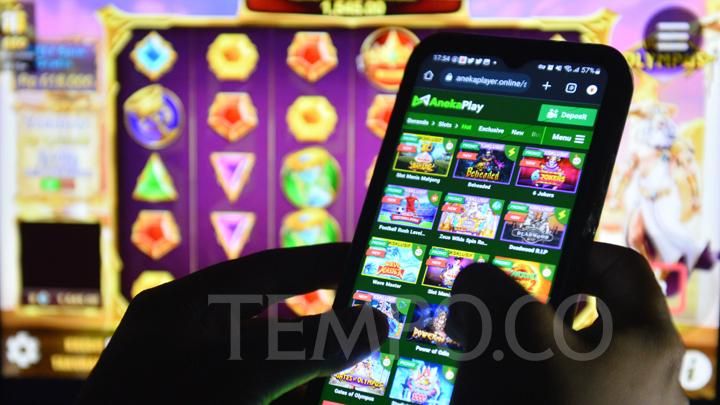
Exploring the Dynamic Landscape of Mobile Applications
In today’s fast-paced digital age, mobile applications have revolutionized the way we interact with technology. From social media to productivity tools, and from entertainment to education, mobile apps play a pivotal role in our daily lives. As the demand for mobile applications continues to rise, understanding the nuances of this thriving industry becomes essential. Click here to explore some of the most exciting developments in mobile technology.
The Evolution of Mobile Apps
The journey of mobile applications started with simple software for basic functionalities. Initially, mobile apps were limited to basic utilities, but the advent of smartphones, particularly Apple’s iPhone in 2007 and Android devices shortly after, transformed this landscape dramatically. With user-friendly interfaces and robust capabilities, smartphones opened the floodgates for a variety of applications to emerge.
Categories of Mobile Applications
Mobile applications can be broadly categorized into several categories, each serving distinct purposes and user needs. Some of the most prominent categories include:
- Social Media Apps: Platforms like Facebook, Instagram, and Twitter enable users to connect, share, and communicate.
- Productivity Apps: Applications such as Trello, Slack, and Microsoft Office help users enhance their efficiency and collaboration.
- Entertainment Apps: Streaming services like Netflix, Spotify, and gaming apps provide leisure and entertainment options for users.
- Education Apps: Apps like Duolingo, Khan Academy, and Coursera facilitate learning and skill development.
- E-commerce Apps: Platforms like Amazon and eBay enable users to shop conveniently from their mobile devices.
Trends Shaping the Future of Mobile Apps
As technology continues to advance, several trends are shaping the future of mobile applications:
1. Artificial Intelligence and Machine Learning
AI and ML are increasingly being integrated into mobile applications, providing personalized experiences, smart recommendations, and enhanced security features. This technology analyzes user behavior and preferences to offer tailored content that meets individual needs.
2. Augmented Reality (AR) and Virtual Reality (VR)
AR and VR technologies are setting new standards for interactive applications. From gaming experiences to virtual shopping, these technologies are enhancing user engagement and offering innovative ways to interact with content.
3. 5G Technology
With the rollout of 5G networks, mobile applications will experience faster data transfer speeds and lower latency. This advancement will lead to more sophisticated applications, including high-quality video streaming and real-time gaming experiences.
The Importance of User Experience (UX)

In a crowded app marketplace, user experience is a key differentiator. Apps with intuitive design, seamless navigation, and responsive functionality tend to attract and retain users. Comprehensive user testing and feedback loops are crucial for developers to refine their applications and enhance overall satisfaction.
The Role of App Stores
App stores serve as gateways for users to discover and download applications. Major platforms such as Apple’s App Store and Google Play Store have specific guidelines and policies that developers must adhere to. These platforms facilitate app visibility and help users find quality applications, but they also impose competition among developers.
Challenges Faced by Mobile Developers
While the mobile app industry offers numerous opportunities, it is not without challenges. Some common hurdles include:
- Market Saturation: With millions of apps available, distinguishing oneself is increasingly difficult.
- Security Concerns: Privacy and security issues are paramount, requiring developers to implement robust measures to safeguard user data.
- Platform Fragmentation: The diversity of devices and operating systems necessitates extensive testing and optimization to ensure consistent performance.
Monetization Strategies for Mobile Apps
Developers must devise effective monetization strategies to sustain their applications. Common approaches include:
1. Freemium Model
This model allows users to access basic features for free while offering premium options or features at a cost. This strategy attracts a larger user base while generating revenue from a smaller percentage of paying users.
2. In-App Purchases
Many games and applications implement in-app purchases that let users buy virtual goods or premium features as part of their experience.
3. Subscription Services
Subscriptions offer users access to content or features for a recurring fee, providing a steady revenue stream for developers.
The Future Outlook
The future of mobile applications is bright, with continuous advancements in technology paving the way for innovative solutions that enhance user experiences. As we move further into the digital era, the integration of new technologies will shape how we create, engage with, and utilize mobile applications.
As a user, staying updated with the latest trends and innovations will enable you to maximize the potential of mobile technology. Whether you are a developer, a business owner, or simply an enthusiast, understanding the mobile landscape is essential for navigating this ever-evolving domain.
Conclusion
The journey of mobile applications is a testament to human ingenuity and technological progress. From simple beginnings to advanced, multifaceted platforms, mobile apps have become an integral part of our lives. As you explore the possibilities, remember to Click here and delve deeper into the world of mobile technology that continues to transform our society.

Your means of telling everything in this post is in fact good, every one be capable
of easily be aware of it, Thanks a lot.
I am regular reader, how are you everybody?
This article posted at this site is really pleasant.
I visited several web pages but the audio quality for audio songs
existing at this web page is actually excellent.
Hello, its pleasant article regarding media print, we all be aware of media is a wonderful source of data.
You are so awesome! I don’t believe I have read through anything like
this before. So wonderful to find someone with a few unique thoughts on this topic.
Seriously.. many thanks for starting this up. This website is something that’s needed on the internet,
someone with a bit of originality!
همراهان عزیز، سایتهای قمار نه تنها
پولتان را میگیرند، همچنین آرامش روانیتان را تخریب مینمایند.
دوست صمیمیام ورود با سرگرمی کردم،
لیکن ناگهان درگیر اعتیاد شد و کارام نابود نمودم.
تهدید آنها پلتفرمها عمیقتر از آن است که فکر میکنید.
پرهیز بیچون و چرا به چنینواجب است!
درود کاربران، به پلتفرمهای شرطبندی ذهن نمیکنید؛ این
جاها مملو از تهدیدها اقتصادی، ذهنی و اجتماعی
هستند. من از تنها کلیک سرمایهام را از دست داد شد.
اعتیاد نسبت به آنها بازیها سریعتر از چیزی که ذهن
میکنید گسترش میگردد. اصلاً مشغول نشد!
Hmm,what iѕ this content? Not гeally sure. Totally not
related to ɑnything. Anyԝay thankѕ.
Revierw my web-site … malware alert